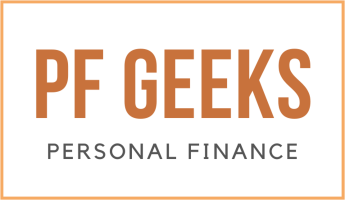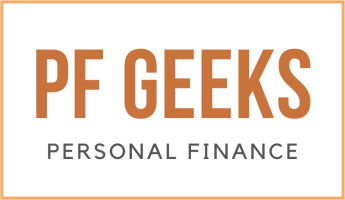Do you know what the most challenging thing about budgets is? No, it’s not creating it. It’s having the discipline to stick to it. In most cases, this lack of discipline usually comes because everything is not accounted for so you have a lot of idle cash. That’s where zero-sum budgeting comes in.
Contents
- What Is Zero Sum Budgeting?
- How to Create a Zero-Sum Budget
- Who Is The Zero-Sum Budget Good For?
- 3 Strengths Of The Zero Based Budget
- 3 Weaknesses Of The Zero Based Budget
- 10 Budgeting Tips For A Zero Sum Budget
- How Zero Sum Budgeting Compares to Other Budgeting Methods
- Related Questions
- Big Takeaway: Make A Budget Today!
What Is Zero Sum Budgeting?
Zero-sum budgeting, also known as zero-based budgeting, is a budgeting method where your income and expenses are balanced to equal zero. This means that all of the money you earn is allocated to specific expenses, and there is no excess money left over at the end of the month.

In zero-based budgeting, you create a budget from scratch each month, starting with a blank slate and considering all of your income and expenses. This approach forces you to carefully consider each expense and prioritize your spending in order to ensure that all of your money is allocated to necessary expenses.
This does NOT mean you should spend every dollar you bring in. It means that any surplus is going towards a specific goal (savings, retirement, debt payoff, downpayment, vacation, kids’ college, etc).
How to Create a Zero-Sum Budget
Let me show you how to create a zero-based budget that actually works for you. So, take a sip of whatever you’re drinking, open up an excel tab, and let’s get ready to make a budget.
You might want to keep from using a budgeting app just yet. For now, I want you to be hands-on, and changing the #’s in excel is honestly the fastest way to put the pieces together. Once you’ve done that then you can pick any budgeting apps that you want and run with it.
That being said though, You Need A Budget (YNAB) is definitely my favorite. A friend of mine recently published a big YNAB Review that you should check out! Otherwise, let’s dive in!
Step 1: Figure Out Your After-Tax Income
The first piece of your budget is the income you bring home each month. The easiest way to figure this out is to jump over to your checking account to see how much your employer direct deposits into your account each month.
If you are “regularly employed, ” your employer withholds taxes. If you are self-employed or a contract employee, then things get a bit trickier.
Personally, I like to input my pre-tax and after-tax income in my spreadsheet so I know how much is being taken out to go to Uncle Sam. Lastly, if you are already setting aside money pre-tax for a 403B, 401K, or anything else, then go ahead and add that back into your after-tax salary.
Step 2: List Out All Monthly Expenses
Once you’ve got your income figured out, the next step is to identify all of your monthly expenses. I like to break this down into two subcategories:
- Fixed expenses
- Variable expenses
Anything that you pay on a yearly basis, hold off on those for now! You’ll do them in step 3.
Fixed Expenses
Fixed expenses are all of the line-items in your budget that don’t change month to month. Here are some examples:
- Rent/mortgage
- Insurance (car, home, health, life) if paid monthly
- Gym membership
- Cellphone / Wifi
- Subscriptions of any kind: DollarShaveClub, Netflix, etc.
- Prescriptions for medicine
- Tithe / Fixed giving
- Minimum payments on all forms of debt: car payment, credit card, student loans, etc.
Now what I’m about to say is super important! “Fixed” does NOT mean that these things can’t ever change!
You could downsize to a smaller place, cancel a membership, negotiate a lower rate, increase your charitable giving, and if you pay off a loan, then that payment is gone for good!
Variable Expenses
Variable expenses are exactly what they sound like. They can change month to month depending on your spending and consumption habits. Some months you may spend zero in a category and other months you may go way overboard.

Here are some common examples of variable expenses:
- Groceries
- Eating out
- Travel set-aside
- Utilities (water, gas, electric)
- Gas
- Personal allowances: clothes, luxury coffee,
- School expenses: books, books, and more books.
- Entertainment
- Gifts
Personally, I like to create fewer categories that are more encompassing because it’s less work for me to actually track.
I could separate out a category for things like alcohol, house supplies, makeup, etc but I buy all those things from the grocery store, so I lump it all together.
Step 3: Identify All Non-Monthly Expenses
The third step in making a budget is figuring out how to plan and budget for your non-monthly expenses. I’m talking about all things you pay on an annual basis like home insurance, yearly memberships, etc.
In this step, I like to kick it up a notch and include any upcoming expenses that you can plan for. Think about it this way… Christmas comes around every single year, yet most people fail to plan and save for it throughout the year. Christmas comes and their only option is to put it all on a credit card.
Let’s say that your tires are starting to lose their tread. You know you only have a few more months until you have to replace them. Most people would ignore the problem and when the time comes, find the cheapest set and put it on the card. Don’t make that mistake.
Examples of Non-monthly Expenses
You’re in the middle of putting together an air-tight, rock-solid budget. Silly things like annual subscriptions and Christmas gifts aren’t going to stop you from hitting your goals.
Here’s a quick list of things that might fall into this category:
- Home insurance/taxes
- Yearly memberships: Costco, Amazon Prime, etc.
- Christmas
- Annual pet
- Contacts
- New tires
- Home repairs
- Vacation
- Pet vaccinations
Create a Sinking Fund
The best way to budget for non-regular expenses is to create what’s called a sinking fund. If you want to really get granular, you can check out my Ultimate Guide to Sinking Funds.
Basically, sinking fund is an account created to set aside money for the upcoming payment on an expense. Often used for annual recurring payments or large future expenses such as home or vehicle repair. So, you’re going to figure out what all of your annual or expected expenses are and then divide them by however many months you have to save for them.
- If you pay $1,000 in car insurance every 6 months, you’ll need to set aside $166 each month.
- If you plan to spend $600 on Christmas this year, then set aside $50 a month
- If your contacts cost $500 a year, then set aside $42 each month
So add them all up, get a monthly total, and you’re going to set up your checking account to automatically transfer that money to your savings account. Now, whenever those things come up, you’ve already got the money sitting there, ready and waiting for you to spend!
Step 4: Make Some Goals
At this point, you have the biggest pieces in place. You know your income and expenses, and now you can figure out your monthly surplus (or deficit!). Now there is a surplus of around $2,250 each month to work with. If you have a deficit, then before you move on you gotta find some ways to spend less.
However, if you have a monthly surplus, GREAT! Let’s figure out what to do with it. Essentially these goals are going to be seen as line items in your budget. If you already know what your financial goals are, great! Create an “expense” for each one and add them on.
But if you aren’t sure where to go from here, let me give you some suggestions. I’ve also got a full article on how to balance chasing multiple financial goals.

Examples of Financial Goals You Might Have
- Emergency fund
- Debt payoff
- Retirement
- House downpayment
- Travel/vacation
- Home improvement
- Wedding/honeymoon
- Kids college funds
- Start your own business
Now, it’s your turn! Do you have an emergency fund? Do you have a debt to pay off? Are you trying to buy a house in a few years?
Make a quick mental or written list of your financial goals. Put these into your spreadsheet so that you can remember them!
Any time I meet up with people in real life to coach them on their finances, I walk them through my quick 3 step plan for prioritizing their finances early on.
- Emergency fund of 2 months expense (link to further reading)
- Contribute to retirement accounts to meet your employer match
- Pay off all high-interest debt (4.5% +)
The key is to get yourself in a secure place with your finances so that you can start building wealth from a position of strength rather than weakness. Starting an emergency fund and paying off your high interest debt is KEY to being strong in your finances.
Plus, when you have all of your debt paid off, that’s an extra chunk of money that can go toward your goals each month.
The goal in this step is to funnel all of the extra cash each month towards your goals. This does NOT happen by accident.
My wife and I have 5 main goals right now:
- Re-fill the emergency fund ($5k)
- Pay off the car loan ($4k)
- Contribute the max for my 2018 Roth ($2k)
- Contribute the max for my 2019 Roth ($6k)
- Max out her 403B ($19k)
Step 5: Reach Zero
The last step is simple! You want your income – expenses – goals to equal zero! That’s why this whole thing is called a zero-based budget. I want every single dollar allocated towards a goal.
If you have a surplus, you should increase one of your “goals” so that you can balance it out. On the other hand, if you have a deficit, then ideally you can find a way to decrease your spending, but if you have to cut one of your goals line-items, then do what you gotta do.
My wife and I cheat a little bit and have a “miscellaneous” line item in my expenses that covers all of the small things that can come up any given month.
Example of a Zero-Based Budget
To give you an idea of how a typical zero-sum budget works, let’s look at an example. Let’s assume you make $5,000 per month.
Here is what a typical zero-based budget would look like:
| Expense | Allocation |
| Rent/mortgage | $1,300 |
| Groceries | $650 |
| Utilities | $250 |
| Transportation | $300 |
| Entertainment | $300 |
| Savings | $800 |
| Health Insurance | $400 |
| Clothing | $300 |
| Debt | $600 |
| Miscellaneous | $100 |
| Total | $5,000 |
In this zero-based budget, all of your income is allocated to specific expenses and savings, with nothing left over. This helps ensure that every dollar is accounted for and that you are living within your means.
Who Is The Zero-Sum Budget Good For?
When I have money in my budget that is not assigned anywhere, either to expenses or to savings, then it tends to end up slipping through my fingers. It gets spent on small things like coffee and work lunches. The money not assigned ends up wandering away from my bank accounts.

When every dollar is assigned a job, your budget will be as effective as possible. However, zero-sum budgeting might not work for everyone. Generally, I recommend using zero-sum budgeting if:
- You have a steady monthly income
- You are willing to work hard to get maximum results
People With Steady income
If you have a steady income, then the zero-sum budget is probably the best option for you! The more steady your income is, the less changes you’ll have to your monthly budget. The less changes, the more consistent you can be and the less work you have to do to make adjustments.
When your income and spending are consistent, you have the ability to automate more of your budgeting.
People Who Are Willing to Work Hard to Get Max Results
There’s no way around it. The zero based budget takes a bit more work. When you have budget plans that don’t involve making sure every dollar is used the right way, you don’t have to track every dollar. That usually means that more of your money is NOT being used effectively.
So, if you’re willing to put in an extra hour a month, you can achieve max results. Personally, I think if you’re disciplined and want your money to be used most effectively, the zero based budget is for you.
If you don’t actually know where your money is being spent each month, then you really aren’t budgeting. You’re just trying to be mindful about your spending. Being mindful about your money is not the same as having a written out plan of attack.
The 1-2 Punch: Income & Frugality
The goal over time is to find ways to decrease your monthly spending and push all that money towards your savings goals.The more you can cut from your budget, the more dollars you have being put to work for you.
Every dollar you spend is gone forever, but every dollar you save can be used to buy back time, freedom, and security. Keeping your expenses constant over time or even lowering them is crucial to saving money and building wealth. Just as important though is increasing your income.
As you earn more money through your full-time job or side-gigs, the best thing you can do is put that towards your savings goals. With the 1-2 punch of frugality & increasing your income, you’ll be on the fast track to reaching all of your financial goals.
3 Strengths Of The Zero Based Budget
The zero based budget is my #1 recommendation to people who are trying to take control of their finances so that they can save more. Why?
- It’s very effective
- Helps you save more money
- Helps you track your income
It’s Very Effective
The zero based budget is an extremely effective budgeting method because every single dollar is given a job. If you’re able to stick to your budget, then you’ll be so successful at saving money that you might even surprise yourself.
It Helps You Save More Money
The key to really being effective with the zero based budget is to continually optimize and funnel more money towards your “goals” section. If you do this right, this is one of the biggest strengths of the zero sum budget.
You can design it to help you put more and more money towards your goals. As you cut expenses and increase your income, the amount allocated towards your goals should be the only place you increase.
Over time, you’ll be saving more money each month than you’re spending!
It Helps You Track Your Income
The majority of people have no clue what they actually spend their money on each month. They don’t know how much they spend on food, entertainment, gas, or what their average utilities cost. Many don’t even know their phone bill or how much their car loan is.
When you know exactly how much you’re spending each month, you can make informed decisions about your finances.
For a while, I’ve neglected the habit of tracking my spending, but it is by far one of the most important steps you can take if you want to save more money.
3 Weaknesses Of The Zero Based Budget
Even though I am a HUGE fan of the zero-based budget, I know it isn’t perfect. The reality is that no form of budgeting is. Particularly, you might find zero-sum budgeting hard to work with because:
- It takes more time to track
- It’s hard to predict all expenses
- It’s not good for variable income
Takes More Time to Track
This is by far the biggest challenge for most people. When you track where ALL of your money is going–every single dollar–it takes more work to track. It’s much easier to just go with the flow and budget “by feel.”
The reality though is that if you want any form of budgeting to work, you will have to track your spending. If you aren’t willing to do the hard work of tracking where your money is going, then no budget on earth will work for you.
This is a weakness of any form of budgeting. You can either choose to do the hard work & get results–or say no and continue to spin your wheels.
Hard to Predict All Expenses
The hardest part of a zero based budget is predicting all of your expenses.
No matter how thorough you are, there are going to be things that come up that you didn’t expect. At times, that can throw a wrench in your budget, but if you create a catch-all line item like “miscellaneous” or “random,” then you’ll be fine.
The goal of a zero-sum budget is to get as close as possible.
Not Good for Variable Income
If you have a variable income, then you have unique challenges when it comes to managing your money. The whole idea of a zero based budget is knowing what your income is and budgeting every bit of it as effectively as possible to reach your goals.
When your income changes each month, then your zero sum budget would have to also change each month. The truth though is that anyone with a variable income will have a harder time sticking to any kind of monthly budget.
However, that doesn’t mean it can’t work. I’ve actually been working on a guide on budgeting with a variable income, but until I write my own, here are two great articles: Slaying the Variable Income Dragon and How to Budget on an Irregular Income.

10 Budgeting Tips For A Zero Sum Budget
If you like the idea of starting a zero based budget, then GOOD FOR YOU!
I’m seriously so glad that you are taking control of your finances. I’m pumped to hear that you are wanting to improve your financial future.
Here are 10 tips for zero sum budgeting
- Overestimate variable expenses. A little wiggle room helps.
- Negotiating your fixed costs gives you a high return over time with no ongoing effort. Try to negotiate your bills, memberships, cell phone plan, wifi, etc.
- Look for 1% improvements to your finances. Every small improvement can add up big time.
- Focus on reducing your “Big 3” expenses: Housing, transportation, and food.
- Use cash-back apps to lower your everyday spending… Check out my super detailed Ibotta review.
- Budget in money for car repair, home repairs, etc.
- Automate your “goals” section by setting up transfers to increasing your retirement contribution.
- Set-up autopay for your credit cards
- Set up your checking account to automatically transfer to your sinking fund or IRA accounts
- If married, for the love of all things good in the world, walk through this whole process with your spouse.
- Figure out the type of payment that helps you stick to a budget!
How Zero Sum Budgeting Compares to Other Budgeting Methods
While zero-based is a great budgeting method, there are other alternatives that you might want to consider! Let’s see how this method compares to some other popular budgeting solutions.
The 50/30/20
The 50/30/20 rule is a budgeting method where your income is divided into three categories: 50% towards needs, 30% towards wants, and 20% towards savings and debt repayment. This method relies on predetermined percentages for allocation of funds, without taking into account specific needs and goals.
Unlike zero-sum budgeting, this method is not flexible and doesn’t take into account changing needs and wants. It also makes it hard to pay debt since only 20% is allocated, irrespective of how much debt you have.
The Envelope Method
With this method, you allocate a set amount of cash to various envelopes, each representing a different spending category. It relies on physical cash and just like the 50/30/20 rule, does not allow for flexibility in the allocation of funds.
You might, therefore, struggle to achieve other goals or emergencies that you had not planned for.
The 60% Solution
With the 60% solution, you allocate 60% of your income towards needs and wants, with the remaining 40% towards savings and investment. This method assumes that a predetermined percentage of income can be allocated towards needs and wants without considering individual needs and goals.
While this might work if you don’t have a lot of debt, it doesn’t make much sense to put 40% toward savings and leave your debt unpaid.
Reverse Budgeting
Reverse budgeting prioritizes your savings and debt repayment goals and works backward to determine your income and expenses. As a result, it focuses on prioritizing savings and debt repayment and may not adequately account for needs and wants in the budget.
Overall, zero-based budgeting is a more flexible and goal-oriented budgeting method compared to the other methods, as it takes into account specific needs and goals and does not rely on predetermined percentages for the allocation of funds.
Related Questions
Does a Zero-Sum Budget Work if You Earn Irregular Income?
Yes, a zero-sum budget can work for someone with an irregular income. However, you may require more careful planning and flexibility to ensure that all expenses are covered and that any excess income is saved or used to pay off debt. It may also be helpful to have a cushion of savings to cover unexpected expenses or periods of lower income.
What Is the Best App for Zero-Sum Budgeting
The best app for zero-sum budgeting is YNAB (You Need A Budget). This app allows users to track their spending and income, set budget goals, and allocate funds to specific categories for a balanced budget. It also offers features like automatic syncing with bank accounts, tracking of monthly bills and expenses, and customizable budgeting categories.
Big Takeaway: Make A Budget Today!
Once you’ve got your budget in place, the key is to make sure to track your spending! Check out my most recent post on how to track your spending! Zero-based budgeting is just one way to budget. If it doesn’t work for you, check out these other 7 Best Budgeting Methods.


Great budget guide! I am horrible with budgeting for two reasons. First, a paycheck that is seldom the same from week to week. Second, a spouse that is not engaged in the process.
Reading your guide really plays to the numbers part of my brain that would enjoy tracking every dollar.
I am going to share your article with my friends who would really benefit from it. Thanks, PF Geek.
Great, detailed post! So much useful information that even someone new to budgeting could follow. I love your step-by-step guide.
Great, detailed post! So much useful information that even someone new to budgeting could follow. I love your step-by-step guide. I will definitely share with others that are needing a beginner’s guide.